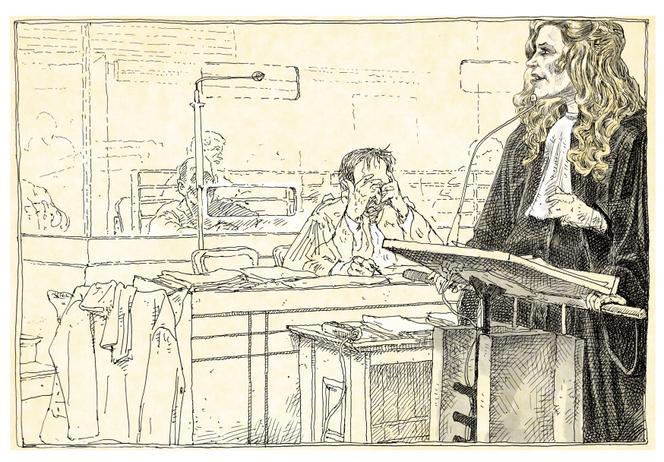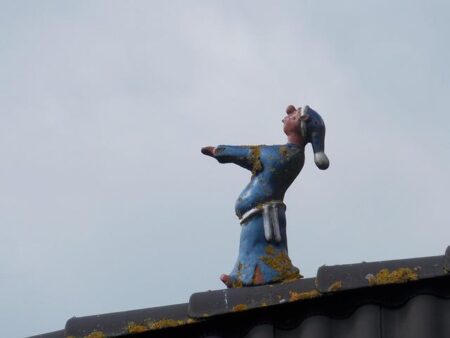In a dramatic turn during the high-profile trial of Cédric Jubillar, his defense team delivered a remarkable closing argument that captivated the courtroom and challenged the prosecution’s narrative. As the case reaches its critical final stages, Jubillar’s lawyers sought to cast doubt on the evidence presented, emphasizing inconsistencies and urging the jury to consider alternative interpretations. The defense’s fervent appeal marks a pivotal moment in a trial that has gripped public attention across France.
Cédric Jubillar’s Defense Crafts Compelling Narrative Undermining Prosecution’s Claims
In a courtroom charged with tension, Cédric Jubillar’s defense team meticulously dismantled the prosecution’s argument, presenting a narrative grounded in reasonable doubt and alternative interpretations of the evidence. Their closing argument emphasized inconsistencies in the timeline presented by the prosecution, while underlining the absence of definitive proof linking Jubillar directly to any wrongdoing. The defense skillfully highlighted key moments overlooked by investigators, suggesting that assumptions rather than facts had guided earlier phases of the case.
Central to the defense was a strategic focus on the following elements:
- Unreliable testimonies: Several witnesses provided conflicting accounts, which the defense argued were opportunistic or influenced by external pressures.
- Lack of forensic certainty: Forensic evidence failed to incontrovertibly place Jubillar at the critical scenes.
- Alternative suspects: Potential other individuals who could have played a role were mentioned but largely ignored by the prosecution.
This nuanced framing aimed not merely to refute charges but to shift perception, urging jurors to reconsider the narrative they had been presented with. The defense’s approach reflects an understanding of the emotional weight of the case while steadfastly advocating for a verdict based on concrete evidence rather than conjecture.
Detailed Analysis of Evidence Presented in Final Defense Plea
In a compelling display of courtroom strategy, Cédric Jubillar’s defense team meticulously scrutinized the evidentiary corpus, casting doubt on the prosecution’s narrative. Key points revolved around inconsistencies in forensic reports, including the timing and origin of DNA traces, which were presented as inconclusive by defense experts. The team emphasized the absence of any direct witness accounts or physical evidence definitively linking Jubillar to the alleged crime scene at the critical moments under scrutiny. They highlighted discrepancies between police testimony and documented timelines, introducing alternative hypotheses that challenged the prosecution’s version of events:
- Disputed mobile phone location data, suggesting Jubillar’s whereabouts were uncertain.
- Unverified forensic timelines, pointing toward potential errors in sample collection.
- Omission of key CCTV footage, which might have clarified movements on the day in question.
The defense also showcased a succinct table contrasting critical pieces of evidence with corresponding expert evaluations that weakened their probative value. This visual tool underscored the ambiguity and speculative nature of the claims presented against Jubillar, reinforcing the argument for reasonable doubt—a cornerstone of criminal defense jurisprudence.
| Evidence Type | Prosecution Claim | Defense Evaluation |
|---|---|---|
| DNA Samples | Conclusive match at scene | Procedural contamination possible |
| Witness Statements | Corroborate timeline | Conflicting accounts noted |
| Mobile Phone Data | Tracked movements | Signal gaps unexplained |
Strategic Appeals to Juror Reasoning Highlighted in Closing Argument
Throughout the closing argument, CĂ©dric Jubillar’s defense meticulously constructed a framework designed to guide jurors through a rigorous analysis of evidence and testimony. The lawyer’s narrative was peppered with logical appeals, emphasizing inconsistencies in the prosecution’s case while simultaneously highlighting the absence of direct proof linking Jubillar to any wrongdoing. By carefully breaking down the timeline and questioning witness reliability, the defense aimed to engender reasonable doubt among jurors—a cornerstone principle in French criminal law.
Key elements of the argument included:
- Highlighting contradictions in witness statements to challenge their credibility
- Emphasizing procedural errors potentially affecting the investigation’s integrity
- Invoking presumption of innocence as a fundamental legal tenet
This methodical approach relied heavily on encouraging jurors to adopt a critical stance—urging them to carefully weigh evidence before arriving at their verdict. The defense’s message was clear: justice depends on reasoned deliberation, not emotion or assumption.
| Appeal Type | Purpose | Effect on Juror Reasoning |
|---|---|---|
| Logical | Challenge factual evidence | Stimulates critical analysis of case details |
| Ethical | Reinforce presumption of innocence | Builds trust in judicial principles |
| Emotional | Subtle restraint to avoid bias | Maintains impartial perspective |
Recommendations for Observers on Interpreting Key Legal Tactics
Observers should exercise discernment when parsing the intricacies of legal rhetoric, especially in high-profile cases like that of CĂ©dric Jubillar. It is essential to recognize that defense attorneys often deploy persuasive narrative techniques to cast reasonable doubt and humanize their clients, which may not always align perfectly with the factual matrix presented during the trial. Paying attention to the balance between emotional appeal and evidentiary substance can provide a clearer lens through which to assess the true strength of the defense’s position.
To better navigate courtroom dynamics, consider these guidelines:
- Focus on legal precedents: Understanding past rulings that the defense references can reveal strategic intent behind argument structure.
- Analyze language cues: Watch for shifts in tone or emphasis that signal key points the defense wants the jury to remember.
- Differentiate fact from speculation: Distinguish between what is supported by evidence and what is posited as a plausible interpretation.
| Legal Tactic | Purpose | Observer Tip |
|---|---|---|
| Emotional Appeal | Engage jury empathy | Note whether emotional language overshadows facts |
| Highlighting Inconsistencies | Create reasonable doubt | Check if inconsistencies are material or minor |
| Selective Evidence Presentation | Focus on supportive data | Consider what is omitted, not just what is emphasized |
Closing Remarks
In delivering a compelling closing argument, CĂ©dric Jubillar’s defense sought to cast doubt on the prosecution’s narrative and reinforce their client’s claims of innocence. As the trial moves toward its conclusion, attention now turns to the court’s deliberations and the eventual verdict, which will bring a critical chapter in this high-profile case to a close. Le Monde will continue to monitor the proceedings and provide updates as the story unfolds.




